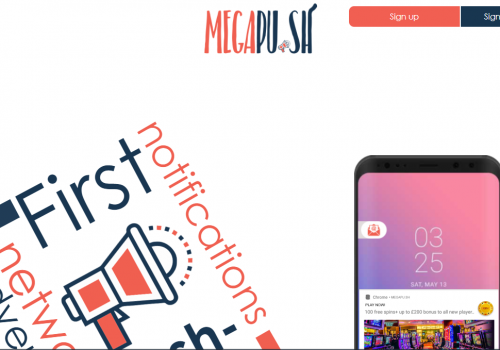One of the best things about online marketing is the ability to measure the effectiveness of your efforts. Unlike TV, newspaper or radio campaigns, you can literally track anything online – where the visitors came from, what they clicked on, what device they used to connect, what type of internet connection they used, what landing page or product converted them … you name it.
You, as a clever marketer, simply have to take advantage of this options. Whoever is not tracking their affiliate campaigns is a fool and leaving money on the table 🙂 And while you can still make money without paying much attention to analysis with organic traffic, it’s absolutely crucial to use advanced tracking solution when working with paid traffic.
Properly setup tracking can help you identify “pockets of profits” that you can focus on and reach great ROI with. To better explain how this works, we need an example here :
Let’s say that you are selling something to people in Australia. By analyzing your data, you discover that you are seeing the best results with visitors who are using Samsung android smart-phones, they are using 3G internet from the Telstra Carrier and the most sales happen between 7 p.m. and 10 p.m. – this is all data that a tracking solution will collect for you.
Now, this doesn’t mean much with organic traffic, since you cannot directly influence what kind of visitors come to your site on their own. However, switch to paid traffic and the situation will change dramatically. Many modern advertising networks let you pick exactly what kind of visitors you want to buy – want just android users? No problem. Want Samsung users only? No problem again. Want to run your campaigns just 3 hours in the evening? Whatever floats your boat 🙂 This opens a whole new world of opportunities for your marketing efforts.
So what exactly is a tracking solution? We also call them “Trackers”, so get used to both names. And how does it work actually?
Trackers are software products (scripts) that collect all kinds of information about the visitors. In order for this to work, every tracker will generate links for you, that you send traffic through. The process is a bit complicated for me to explain in one blog post, but let me at least explain how the tracker knows what click converted into a sale.
Every visitor/click that goes to a tracker, is assigned a unique ID, it’s usually a random mix of letters and numbers. This ID is carried with the visitor all the way to the product checkout page. Once a sale is closed, or the visitor signs up for something – we have a conversion. What happens next is that the vendor or whatever advertiser we work with, takes this ID and sends it back to the tracker, telling it that the visitor with this particular ID converted. This is done via the so called “postback” or “tracking pixel” so in order for this to work, the vendor/advertiser or affiliate network has to support the postback feature.
Since the tracker already has all kinds of data stored about every visitor that went through it, we can now look up all the info about this particular visitor. This helps us identify “segments” of traffic that work better for us and allows us to focus on just those.
Right now there are 3 most popular trackers out there, all of them are paid solutions, using a monthly payment method. One of them, called Funnel Flux, is a solution you need to host yourself, so you will need a server too. The other two, Voluum and Thrive, offer a cloud version – this means that they take care of hosting so you don’t have to worry about it yourself, but the monthly fee reflects this obviously. Thrive is the only one from these 3 that offers both the cloud version and the self hosted one. All of them are optimized for paid traffic management and any of them will do the job just fine.
Since an image is worth a 1000 word sometimes, let me show you a few screen-shots from a real campaign I have been testing this week. The tracker I’ve used in this case is Voluum. This is a campaign targeting United Kingdom, the product is a mobile subscription offer with different payout levels for every mobile carrier. I wanted to run an initial test to see whether it has potential and what carriers will work the best. Please note that I used a small selection of “proven” ad placements for this, that’s why the results look so good.
The campaign has been running for 2 days, the total amount of clicks I purchased was 5539, I paid $86.11 for them and the revenue was $214.06 which equals to $127.95 profit and a ROI of 148.59%. This alone is a very nice result for such a small campaign, but when we dig deeper and look at the data, we will see it can actually be even better and the profit can go up with a bit of optimization.
Screen-shot no.1 shows the breakdown by OS, as you can see iOS is doing a bit better than Android and I should try to get more of those visitors. The rest of the OS’s didn’t show much activity, so I might as well pause them and save a few $.

Screen-shot no.2 shows the breakdown by mobile carriers. As you can see the carrier “3” didn’t turn any profit, I actually lost a bit on it. It was very close tho and it can convert within the next few clicks which would kick me into profit too. So I will continue running it for some more. If it doesn’t improve, I can either stop buying this carrier, try to get it at a lower price or test another product with it. T-mobile didn’t convert yet, but I didn’t get enough clicks yet, so I should give it some more time.
Screen-shot no.3 shows the breakdown by browsers. Mobile safari gives me the best results, which is no surprise since iOS came out as the best too and safari is their default browser. Chrome and Chrome Mobile did well too, the rest of the browsers has low volume and no conversions yet. Again I could block some of them and save some cash here too.
As you can see, by looking at the data closely, I definitely see I should focus on iOS and Safari Mobile browser for maximum ROI with this campaign. Android and Chrome look good too thou, so I will not be pausing them. There are some things I could block to increase the ROI a bit, but I will let it run this way for one or two more days to be certain about it.
These were just 3 simple breakdowns, I could go way deeper and look for brands, device models etc and optimize this way better. But I didn’t want to make this too complicated to understand at this stage. I will definitely write more detailed studies and guides in the coming days and weeks.
Thanks for reading.
[grwebform url=”https://app.getresponse.com/view_webform_v2.js?u=Sym6E&webforms_id=8162402″ css=”on” center=”off” center_margin=”200″/]







2 comments
Matej, what kind of cost model are you tracking here? CPM? CPC? SmartCPM? thanks
Hello Alex, the screenshots above are from campaigns I run on the CPM model, but the price is calculated from the average CPC .